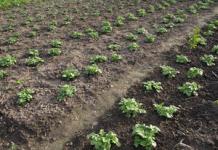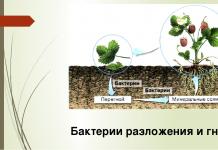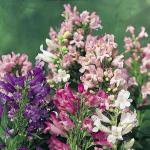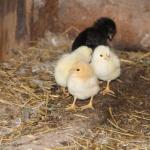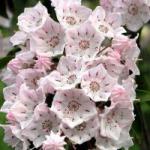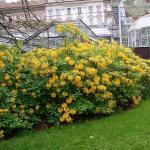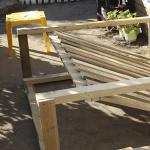The growing season and the growing season of plants are different concepts, although many do not know this. The first concept determines the timing of the development of a particular species or variety of plants. This refers to the time from the moment the seedlings appear until the next harvest. The growing season is a determining factor in which category a particular horticultural crop can be attributed to. Therefore, today there are three types of garden plants with different fruit ripening periods - early-ripening, mid-ripening and late-ripening. But the growing season, what is it? This is the name of a certain period of time during which the active development of plants takes place, taking into account the climatic conditions of the region.
How is the growing season determined?
Often, the harvest in the garden is carried out before the seeds ripen. In some cases, the ripening period of the fruit may not even come. For tomatoes, cucumbers and other vegetable crops that produce several crops, it is necessary to determine the time of the first and last harvest. This will allow us to correctly characterize this concept. 
In fact, the growing season for each crop is a variable value. Its change can be influenced by many factors related to the characteristics of the variety and the growing environment. In this regard, it can last from several days to three months. With a lack of nutrients, good lighting and heat, this process can take an order of magnitude longer - up to 9 months. Vegetation is directly related to the process of growth and development of plantings, although these two concepts differ significantly from each other.  The first concept implies an increase in size and shape, the formation of new cells and parts. While development is a qualitative change that occurs at points of growth. As a result, plants begin flowering, new organs appear, and fruiting occurs.
The first concept implies an increase in size and shape, the formation of new cells and parts. While development is a qualitative change that occurs at points of growth. As a result, plants begin flowering, new organs appear, and fruiting occurs.
These two phenomena occur inside plants at the same time. The only difference may be their intensity and pace. This is influenced by the environment and the factor of heredity. The timing of the growing season can be controlled by creating favorable conditions for plantings to grow. Thus, it is possible to stimulate, or vice versa, to slow down the growth of crops, if necessary.
Growing seasons for different crops
 In annual vegetable crops - potatoes, cabbage, tomatoes, growth and development should occur in parallel and intensively. The same applies to fruit trees - apples, pears, plums, etc. This will increase the assimilation apparatus, ensure early and abundant fruiting. If you suspend the growing season for vegetables such as tomatoes or cucumbers, you can get a good harvest of tasty fruits. It is worth considering that such a technique will significantly affect the fruiting process itself, in which all the fruits do not have time to ripen.
In annual vegetable crops - potatoes, cabbage, tomatoes, growth and development should occur in parallel and intensively. The same applies to fruit trees - apples, pears, plums, etc. This will increase the assimilation apparatus, ensure early and abundant fruiting. If you suspend the growing season for vegetables such as tomatoes or cucumbers, you can get a good harvest of tasty fruits. It is worth considering that such a technique will significantly affect the fruiting process itself, in which all the fruits do not have time to ripen.
I would like to note that the growing season for fruits, including the apple tree, begins in the spring, when buds bloom on the trees.
The duration of this process in an apple tree is affected by temperature and the length of daylight hours, which is due to the region where the trees grow. The intensity of growth and development of the apple tree will depend on many factors - the plant variety, its agrotechnical features and natural factors. Each breed of fruit and berry plants, including the apple tree, has its own phenophases that occur at different times. Their change is influenced by the temperature regime, the level of humidity of the air, etc.

Period shortening
 If the cultivation is aimed at obtaining greens, roots or stems, gardeners stimulate growth while slowing down the fruiting process. This technique is effective in the process of growing potatoes, cabbage and other garden crops. This is due to the fact that in such plants at the flowering stage, the fruits begin to coarsen and lose their taste. The same thing happens with perennial horticultural crops, which are recommended to be stored in a cool room during the cold season. This condition will ensure an active flowering process, inhibiting their growth. Slowing down growth will allow better and longer preservation of the crop of cabbage, potatoes and other vegetables.
If the cultivation is aimed at obtaining greens, roots or stems, gardeners stimulate growth while slowing down the fruiting process. This technique is effective in the process of growing potatoes, cabbage and other garden crops. This is due to the fact that in such plants at the flowering stage, the fruits begin to coarsen and lose their taste. The same thing happens with perennial horticultural crops, which are recommended to be stored in a cool room during the cold season. This condition will ensure an active flowering process, inhibiting their growth. Slowing down growth will allow better and longer preservation of the crop of cabbage, potatoes and other vegetables.
Every gardener should know all these subtleties in order to be able to properly regulate the growing season of plantings. After all, this is a guarantee of a plentiful and high-quality harvest in the future.
Many often confuse the growing season with the growing season, although these are completely different definitions. The last phrase is a period of development of a particular plant species or variety.
The growing season is the time period in the year during which the plant grows and develops according to the weather conditions of a particular area. Thus, the growing season can be safely called a meteorological concept that refers to all plants and crops growing in a particular area.
What is the growing season for plants
Throughout the year, all plants, regardless of whether they are berry or fruit, live through two main periods: vegetation and dormancy. Some experts are accustomed to identify short-term phases along with them: the spring transition of trees and shrubs from dormancy to vegetation and the opposite autumn transition. At this time, all the vegetation is preparing for the changes that await it: in the fall - for the winter "hibernation", and in the spring - for active fruiting.

The growing season is the time during which the plant develops, it begins with bud break and ends with massive leaf fall. At the beginning of this period, phases of active growth, the formation of flowers, fruits are observed through the use of stocks of nutrients accumulated by shrubs or other vegetation over the past year, as well as those formed during this growing season. After that, growth slowly subsides and stops, and the fruits begin to actively develop and mature, along with this, the plant accumulates nutrient material, thereby creating a reserve stock for the next year's harvest. In the end, the growing season ends, the trees and bushes shed their leaves and go into a rest period.
In the north and south, the growing season will be different. This should be taken into account and used when choosing and preparing a variety for planting. In the south, almost all plants can be grown, regardless of the ripening time, and in the northern part of the CIS countries, if they grow, they will not always ripen.

In order not to get confused in the difference between these concepts, gardeners began to allocate time from the first shoots to the end of the harvest and call it the growing season. Since in horticulture plants often do not go through the entire ripening cycle for the simple reason that the crop must be harvested before the seeds are fully ripe. For example, corn is harvested in the so-called milk form. Tomatoes, cucumbers and other vegetables that are harvested several times have a growing season, which is indicated by the time period from the first to the final harvest.
Vegetable crops differ in the fruit ripening period, which can be several months. In areas with an unfavorable climate, almost every variety can extend its growing season.
The growing season of tomatoes and cucumbers
Depending on the length of the growing season, tomatoes, just like cabbage or potatoes, have a different ripening period for vegetables. Tomatoes are divided into early ripening - 60-75 days, early ripening - 76-90 days, mid-ripening - 90-105 days, medium-late - 105-115 days and late - 120-130 days.

In early ripe cucumbers, the growing season takes 95-100 days, and in late-ripening 105-115 days.
Gooseberries, currants and raspberries
Gooseberries enter the growing season earlier than many other shrubs. It blooms, as a rule, in May 15-30, flowering occurs on the 20-22nd day from the beginning of the growing season, the berries ripen after 1.5-2 months.
Another one of the first to start the growing season early is the currant, its buds begin to swell already around the first half of April, in the southern regions the beginning of the growing season falls on an earlier period, and in the northern regions - on a later one. 10 days after the start of swelling of the buds, the buds open, while there are still no leaves on the bush. Flowering takes a maximum of a week.

The raspberry growing season begins in mid-March-early April. The difference in varieties is about 3 days. Raspberries bloom already in May, after 38-56 days from the beginning of the growing season. Berry ripening occurs in June-July, depending on the region, variety and climatic conditions.
Fruit trees: apple, pear and cherry
Cherries and plums start growing 10-20. The duration of the period from the swelling of flower buds to their blooming is 10-12 days. The buds bearing the rudiments of leaves bloom 4-7 days after fruiting.
The beginning of the growing season of the apple tree falls, as a rule, on the 20th day after the average temperature reaches +5°C and above. And at the transition to 10 ° C, buds begin to bloom. The most optimal for the ripening of buds are + 15-20 ° C. Flowering takes an average of 10 days. For summer varieties of apples, the sum of average daily temperatures is 1500-1600°C, for autumn 1600-1750°C and for winter apple trees - 1750-1800°C.

The pear blossoms at an average daily temperature of +6°C and above. Fruit buds bloom a little earlier, at the same time there is an increased growth of roots, which fades at + 10-20 ° C.
How to speed up the growing season
When growing fruit-bearing trees and vegetables, it is important to create conditions so that the growth and development of these plants takes place in parallel and as quickly as possible. This will ensure the growth of foliage. Premature rich formation and better fruit growth. To speed up the growing season, abundant watering, spraying, fertilizing, processing and other activities are used.
Fertilizer and plant nutrition
All agrotechnical measures, as well as care for vegetation, fall on the phenophases of development. In early spring, many berry and fruit-bearing bushes live mainly due to the plastic material located in the system of plant roots and its aerial part, deposited over the past year, and not due to the nutrient components that are currently present in the soil.


If a plant over the past year has not been able to accumulate the required amount of nutrient material, then it will not have enough strength to lay flower buds to obtain a guaranteed harvest next year, and it will switch to the path of periodic fruiting. In order to regulate the growth processes and the ability to form fruits, it is necessary to provide the plant with nutrient material not only in summer and spring, but also in autumn.
In the spring and at the beginning of the onset of the summer season, trees and shrubs, and, accordingly, all their organs exist not due to the plastic materials collected last year, but due to the active absorption of nutrient material in the soil. At this stage, it is necessary to ensure the optimal supply of water in the ground, apply organic fertilizers (green manure, litter, etc.) and minerals.
The life of plants takes place with a certain periodicity, in which both attenuation and a burst of active growth are observed. The time when the active development of the plant organism occurs is called the growing season. It is necessary to know about the features of its course in different horticultural and horticultural crops in order to manage this process to improve the quality of the crop.
Getting high yields of garden fruits and vegetables is the dream of every summer resident. But often this is hindered by climatic and adverse weather conditions. Therefore, it is important to choose plant varieties that have a growing season suitable for a particular region.
The growing season is a period of time during which the plant is actively developing. Each variety of vegetable and horticultural crops is different. Its duration also depends on the climate of the growth of the species. The time period can be extended by two or more times if there is not enough light, food or water for the growth of the organism.
The growing season is calculated from the time when the seed germinates until the moment that ends with the ripening of the fruit. In trees, it is associated with awakening from hibernation, characterized by sap flow and swelling of the buds, before the leaves fall.
The duration of development in a particular plant depends on what type of crop it belongs to - early ripening, mid-seasoning or late-ripening.
For the concept of the growing season, another definition. This is part of the year with those temperature regimes that are favorable for the growth and development of plant organisms. It may be shorter than the growing season, as not all areas fully ripen the fruits. And in others, the growing season for a particular species is repeated several times. Understanding, having knowledge about the timing of the vegetation of plants is important and necessary for the competent agricultural technology of horticultural and horticultural crops.

The lifespan of a plant is calculated from the moment sprouts appear from seed to death. Therefore, they are divided into the following groups:
- Annual species have a short lifespan: they bloom, bear fruit and die once. In regions with a cold climate, annual seeds are planted in spring, and seeds ripen in autumn. In the southern regions, although the vegetation of annual plants continues constantly, their life cycle is only one season. This is what happens with pumpkin.
- Some plants will take two years to complete their growing season. First, they reach the state of the root crop, the bulb, in which nutrients are collected. And the seeds or fruits necessary for the subsequent cultivation of the species are already formed in the second year. In subtropical zones, the growing season of the plant continues naturally, and in cold climates, by planting overwintered plant organs. Within two years, the full life cycle of the plant goes through, which includes turnips, turnips,.
- Perennials are characterized by fruiting throughout their lives. In the first year, they form organs - rhizomes, bulbs - with a supply of nutrients. After wintering, shoots appear from them, which develop and go all the way to maturation and death. These periods last for many years. These types of plants include horseradish, rhubarb, sorrel, some types of onions. From flower crops - lilies of the valley.
The short growing season of annuals allows you to annually update species, experiment with plantings. And the beloved perennials delight with their fruits and flowers every year, without requiring hassle and time.

Currants are classified as frost-resistant species, so the growing season for a berry bush begins even at a temperature of about five degrees Celsius. Not afraid of spring frosts white and red plant species. But for blackcurrant during its flowering, low temperatures are dangerous, they can damage the buds and flowers. afraid of severe frosts, so often his shoots freeze slightly.
Each period on the currant bush, an increase in young shoots occurs, which stops by the age of five years of the plant's life. In gooseberries, this happens a year or two later. After that, the yield of berries sharply decreases.
The removal of old branches will help to update currants and gooseberries.
Cut them out in early spring along with frozen shoots. Fertilization in the form of diluted bird droppings or mullein will speed up the ripening process of berries. In order for the berries to pour well, they need a lot of moisture.
During the growing season, currants are watered up to four to five times, and gooseberries - two or three. Vegetation of berry bushes ends with harvesting. Gooseberries ripen in late July - early August, black currant - after July 15, and red - in the first half of the month. Protecting shrubs from spring frosts, creating sufficient light and humidity for them will allow them to go through the growing season to the full extent.

The ripening period for vegetables such as tomatoes and depends on the choice of variety. For early ripening varieties of cucumbers, the growing season lasts no more than sixty days, and for late ones it is extended by ten to twenty days. In a tomato, ripeness of early varieties occurs ninety days after germination, in mid-ripening varieties - a hundred, late species need 110 - 130 days. Depending on this, vegetables are sown.
Only in the southern regions, tomatoes are sown immediately in open ground, as they will ripen during the growing season. In temperate climates, they are grown in seedlings, bringing seedlings to sixty days of age. To accelerate the growth of tomatoes, they need top dressing at intervals of two weeks. To get ripe fruits on time, it is necessary to restrain the powerful vegetative growth of the main shoot and stepchildren. Therefore, side shoots are removed, and the bushes are fed with phosphorus and potassium.
You can speed up the growing season of cucumbers by warming the seeds before sowing.
An increase in soil temperature helps the rapid ripening of the vegetable. This is facilitated by sowing next to cucumbers, peas. The introduction of and, timely helps to accelerate the growth of fruits. During the growing season, several crops of cucumbers are harvested. The growing season for cucumbers and tomatoes is considered complete if ripened seeds for the next year are collected from the fruits.

The growth of fruit trees begins with swelling of the buds. First, flower buds bloom, and a week later - leaf buds. Each type of fruit tree has a different growing season:
- Apple trees begin to wake up as the heat increases. As soon as the air temperature warms up to ten degrees above zero, the kidneys open. The flowering of the tree lasts ten days. Depending on the variety, apple trees bear fruit from July to late autumn. The growing season of a fruit tree is extended by watering and fertilizing.
- At awakening begins already at daily temperatures of six degrees Celsius. Flowering is delayed from the beginning of the growing season by fifteen days. It will stop if a sharp cold snap begins. After one or three weeks of flowering, the pear will begin to bear fruit.
- It is characterized by a life span of twenty years, and it begins to bear fruit in the fourth or seventh year. After flowering in May on the plum, the fruits form and ripen in early varieties in August, in late varieties in mid-September.
- characterizes undemanding to temperatures, soil composition, care. It goes through the growing season easily and quickly, waking up in early April.
Fruit trees need to create comfortable conditions so that they can give high yields of apples, pears, plums.

In regions with a temperate and cold climate, it is difficult for plants to go through the growing season completely. Therefore, you need to know how to speed it up:
- The life of plants in early spring is based on the nutrients that it takes from the soil or accumulated in the roots. A low percentage of them will not allow flower buds to form, then there will be no harvest. Therefore, for perennial crops, fruit trees and shrubs, vegetation begins if nutrients are put into the soil in the fall. And the introduction of nitrogen-containing fertilizers in the spring will help the plant to quickly strengthen and begin its development.
- It is possible to shorten the period of development of fruit trees not only thanks to mineral dressings, but also the preservation of moisture by the method of snow retention. Then the spring activity of the tree will accelerate.
- Delay in sowing does not allow many annuals to complete the growing season, that is, to give seeds or fruits. Therefore, it is important to sow crops on time, taking into account the climatic conditions of the region. And often for plants with a long growing season, seedling cultivation is necessary.
- For heat-loving plants, a large amount of daylight is important, so some species are best grown in greenhouses with.
Depending on what the crop is grown for, the method of influencing the duration of its growing season is also chosen. We need heads of cabbage for cabbage, so we must not let the vegetable plant bloom, but focus on the quality of the fruit.
More information can be found in the video:
Studying the life periods of plants is the key to the successful cultivation of any crop.
Summer residents, gardeners and, moreover, agronomists should have in their luggage a number of knowledge related to the development of plants in a given period of time.
Let us analyze in more detail the question that sounds like this: “Plant vegetation - what is it and how does such a period proceed”.
Botanists have established four periods:
- Vegetation.
- Peace.
- Preparing for the winter.
- Vegetation preparation.
Do not confuse the concepts of growing season and vegetation. These are two completely different processes.
Shrubs and trees bud form differently. Let's say stone fruits do this in three months, but apple trees need more time. Plants bloom not immediately in one period of time, but gradually, over several days. This is the key to better pollination.
Vegetation has been accumulating nutrients since last year. After the plant blooms, growth slows down and fruit ripens.
The end of the growing season is considered to stop growth. Shrubs and trees prepare for winter and shed their leaves.
peace
The plant is dormant during the winter season. It draws strength from those nutrients that it has accumulated during the growing season. By the time spring arrives, stocks are completely depleted.
There are thaws in the winter, some plants wake up and begin to actively manifest themselves. Abnormal weather for winter, more often in cities, leads to greening of the lawn.
It is important to feed all trees and shrubs in the fall so that they can easily survive the winter. Not the last place is occupied by abundant watering, which also needs to be carried out in the fall. Given the large loss of moisture in winter during a harsh period, the plant may die.
Vegetation example
Fruit and berry plants have a different course of vegetation, which is directly related to flowering and fruit ripening. Let's consider some options.
Vegetation of cucumbers and tomatoes varies in different varieties. Early-maturing tomatoes develop quickly - up to 75 days. However, tomatoes of late varieties can ripen up to 130 days. It is the same with cucumbers - the early ones grow 95-100 days, the late ones - a maximum of 115.
Gooseberry vegetation starts early. Three weeks later, flowers can be seen on its shoots. This period falls on the month of May. So are currant bushes. The buds of the shrub are visible in April, after 10 days the buds are formed, but the leaves are still hiding.
Apple trees begin to grow actively when the temperature reaches above +5 degrees. After 10 degrees, buds begin to bloom. In fruit plants, they bloom first and only then in leafy ones. When the temperature reaches 15-20 degrees, the buds ripen. The duration of flowering lasts no more than 10 days.
Vegetation control
To get an excellent harvest from fruit and berry crops, vegetation control is necessary. This period is subject to acceleration and deceleration. It all depends on what type of plant is being considered, and what needs to be obtained as a result of its maturation.
For a good harvest of vegetables, activity is slowed down at the very beginning. In root crops, the flowering process is delayed.
Conditions for favorable vegetation
Fertilizers and watering are the most effective way for successful plant growth!
 Fertilizers consisting of nitrogen and organic matter are best applied in spring or early years.
Fertilizers consisting of nitrogen and organic matter are best applied in spring or early years.
This will give the plant the necessary nutrients, increase fruiting, and as a result, the harvest will be excellent.
In autumn, the plant should not be fed with these substances, the result will be just the opposite.
Reasons for a slow growing season
Hot summers cause slow growth of domestic crops. Watering must be carefully monitored. But do not overdo it, especially in the last month of summer. This will bring a lot of trouble.
In fact, the growing season of plants is the formation of a supply of nutrients. They need to be saved to winter, and not spent on growth. Weeds that are located around garden crops feed on moisture that should have gone to the roots. Do not forget about this and monitor the situation around the bushes and trees.
Using simple agrotechnical manipulations, you can get great benefits from the growing season and extend the life of the plant.
High tech
 In the near future, people dream of ridding themselves of any agricultural work by creating robotics that will cultivate and harvest.
In the near future, people dream of ridding themselves of any agricultural work by creating robotics that will cultivate and harvest.
Genetic engineers are doing their bit and breeding plants that are resistant to any disease.
For example, soon wheat and oats will be able to go through the vegetative stage despite the weather conditions. The concept of vegetation is getting more and more attention. For every scientist, this word means something personal.
Genetic engineers see it as a set of characteristics that affect fruit performance. Technologists in the field of agronomy solve the problem of production profitability. Those who produce products are concerned about the time during which it is possible to carry out a full cycle of growing a plant and achieve the greatest profit.
Vegetation in ecology
In scientific circles, ecologists consider the process of plant vegetation to be the main stage in which a highly organized form of life is formed.
If one day something bad happens, and there is a failure in this process, then our planet for breathing multicellular creatures will become unsuitable. And it will affect people first of all.
Vegetation is a stage in the life of a plant, characterized by its active vigor. It is associated with changes in weather conditions, usually with the advent of spring. In spring, the plant comes to life, grows, breeds.
The increase in air temperature and the arrival of daylight stimulates its active development. Vegetation primarily depends on the terrain and weather conditions in which the culture grows. At this stage, only some horticultural crops are able to bring more than one crop. Others, on the contrary, do not have a chance to bear fruit under not very favorable conditions.
What is the growing season
This is a specific time period during which the plant going through an active growth phase. For example, in early ripening cucumbers, the growing season lasts 95-110 days. In such perennial crops as apple, pear, plum and others, the vegetative stage begins to emerge during the swelling of flower buds, and ends with leaf fall in autumn. In winter, the trees begin an inactive growth phase, which is no longer a growing season.
 The growing season for trees growing in tropical and equatorial conditions proceeds according to a slightly different scenario. For example, in a banana tree, the growing season is an interval of time: starting with flowering and ending with the collection of fruits. After that, the tree briefly leaves the growing season, despite the fact that it remains still green.
The growing season for trees growing in tropical and equatorial conditions proceeds according to a slightly different scenario. For example, in a banana tree, the growing season is an interval of time: starting with flowering and ending with the collection of fruits. After that, the tree briefly leaves the growing season, despite the fact that it remains still green.
Vegetative period
This term covers all plants of a particular climate zone. We will talk about some of the plants in our zone, about what is the vegetation of fruit trees, about methods for determining it, and about some vegetable crops. The lifespan of perennial plants is divided into 4 stages:
- vegetative growth.
- Autumn transition.
- Relative peace.
- Spring transition.
Perennial crops in our natural climatic zone repeat these cycles from year to year. The growing season covers only 3 points from this list: the first, second and fourth. The winter period is not considered the growing season. The 4-point interval may start with a slight delay, or, conversely, earlier than expected. It depends on when the spring heat comes, the snow melts and the night frosts pass.
For each species or variety of plant, the temperature required to start the growing season is different. For example, in an apricot tree, the growing season will come earlier than in a cherry or pear. The temperature for the onset of the growing season should be at least +5 degrees Celsius.
 In annual vegetable crops, the growing season is still different. The beginning of the process is the emergence of seeds, and the end is the drying of the plant. Some crops in the warm season bear fruit more than once. The beginning of the appearance of flowers and the full ripening of fruits will be the growing season.
In annual vegetable crops, the growing season is still different. The beginning of the process is the emergence of seeds, and the end is the drying of the plant. Some crops in the warm season bear fruit more than once. The beginning of the appearance of flowers and the full ripening of fruits will be the growing season.
How to determine the growing season in plants
In different species and varieties of plants, the growing season is different from each other, so it cannot be enclosed in a specific framework. This period can vary from three days to three months. However, plants are affected by most factors, namely:
- Soil condition.
- Weather conditions.
- Various diseases and pathologies.
- Heredity.
It is from these factors that the growing season can vary in time frames, and sometimes last up to 9 months. Different cultures of our natural-climatic zone fail to mature fully, so they are harvested earlier, as there is not enough time for ripening. Then it should be said that the growing season ended incorrectly.
 Still, there is a method for determining the stage of vegetation. For example, you bought a bag of seeds, and the growing season must be indicated on it from beginning to end. With regards to fruit trees, which we have already talked about, the beginning is the swelling of the buds, and the end is the fall of the leaves. For example, in different varieties of potatoes, the growing season will begin with the germination of the sprout and end when the plant is completely dry and the potatoes can be dug up.
Still, there is a method for determining the stage of vegetation. For example, you bought a bag of seeds, and the growing season must be indicated on it from beginning to end. With regards to fruit trees, which we have already talked about, the beginning is the swelling of the buds, and the end is the fall of the leaves. For example, in different varieties of potatoes, the growing season will begin with the germination of the sprout and end when the plant is completely dry and the potatoes can be dug up.
Plant Vegetation Control
In order for trees, shrubs and other fruit crops to produce good fruits, it is important to control their vegetation. Her can both speed up and slow down, depending on the desired results. In order for cucumbers and tomatoes to give a good harvest, it is better to slow down their activity at the very beginning. In root crops, it is better, on the contrary, to delay flowering so as not to spoil the taste of the vegetable. Dry and hot summers inhibit the growth of horticultural crops, so they should be watered more often.
rest period
With the onset of winter, the plant goes into hibernation. It maintains its vitality thanks to what it has accumulated during the growing season. With the onset of spring, stocks are already depleted. With the onset of a thaw in winter, the plant can wake up and be active. Such a picture can be seen in cities during abnormally warm weather in December or January, the grass on the lawns begins to turn green again. Therefore, it is important feed trees and shrubs in autumn so that they have enough nutrients until spring. In winter, the plant loses moisture. If the winter is very windy, it may even die. To avoid this situation, it is recommended to water it in the autumn so that it has enough moisture.
Period shortening
 If the cultivation is intended to produce greens, roots or stems, stimulate growth while slowing down fruiting. This the method is effective when growing potatoes, cabbage and other garden crops. This is explained by the fact that in these crops at the flowering stage, the fruits coarsen and lose their taste. The same thing happens with perennial horticultural crops; in the cold season, they must be stored in a cool room. This condition will help ensure an active flowering process, thereby inhibiting their growth. Suspension of growth allows you to save the crop for a long time.
If the cultivation is intended to produce greens, roots or stems, stimulate growth while slowing down fruiting. This the method is effective when growing potatoes, cabbage and other garden crops. This is explained by the fact that in these crops at the flowering stage, the fruits coarsen and lose their taste. The same thing happens with perennial horticultural crops; in the cold season, they must be stored in a cool room. This condition will help ensure an active flowering process, thereby inhibiting their growth. Suspension of growth allows you to save the crop for a long time.
